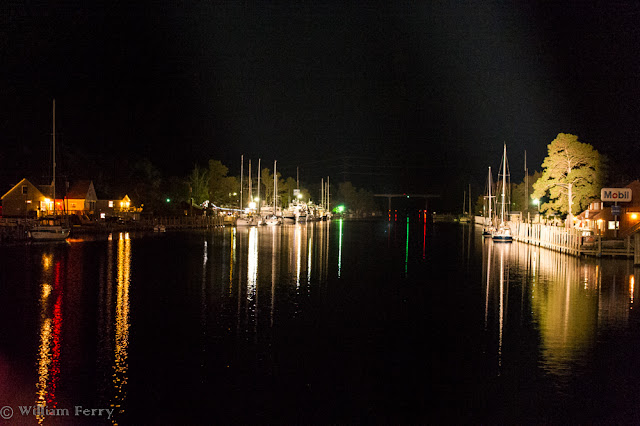Connecting With Nature
This Brown Pelican came along side to check us out. We would later see flocks of them swooping and diving in the wake of our boat. Our passage over shallow waters would often kick up something they could nab.
Cormorant Clutter
Though Norfolk dropped behind us quickly there were isolated reminders that the Navy has many tendrils reaching out past the port. Best guess for this location is that the buildings are Navy ammunition bunkers.
Dead end? No, but it marked a short stop for us at the Great Bridge Lock, the only lock on the ICW.

The lock makes neighbors of us all for about 15 minutes. Captain Snyder has a feather touch on the controls as he snugs the edge of our ship up to the tie up bollards. Take a quick look at the powerboat on the right. Do you see the furry speck that caught my eye?
Emerging from around the starboard side comes the resident cat. Guess it makes more sense to keep a cat than a dog on board.
Not at all what we expected - this run of the ICW resembled a Louisiana swamp. Indeed this manmade canal runs through the appropriately named "Dismal Swamp. As foreboding as it looked, the swamp was once home for runaway slaves.
Our moorage for the night was at Coinjock, NC. The place is not on many maps and probably familiar only to those using the ICW. The little store there capitalized on its pint-sized reputation by selling T-shirts that read "What Happens In Coinjock, Stays In Coinjock." This flyspeck sized place is thought to get its name from the Indian name for mulberry.









No comments:
Post a Comment